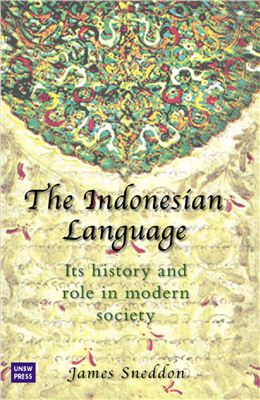University of Washington Press, 2004. - 248 p.
ISBN-13 / EAN: 9780868405988
ISBN-10 / ASIN: 0868405981
Indonesia is the fourth most populous nation in the world, and one of the most linguistically complex. Its ethnic groups speak more than 500 languages and of these Malay, renamed Indonesian, was chosen to be the sole national and official language. Indonesian's development into a mode world language has been described by one socio-linguist as 'miraculous'. The language has been a key factor in the shaping and unification of mode Indonesia.
This important book, the first of its kind, is a historical, social, cultural and linguistic study of Indonesian. It traces the origins and pre-colonial development of the language, the emergence of Classical Malay from the fourteenth century, the choice of Malay by the nationalist movement as the national language prior to Independence, the planning associated with the adoption and implementation of the language, its borrowings from other languages, its use in contemporary Indonesia and its future. The book challenges many assumptions about Indonesian, particularly countering the myth that Indonesian is a simple language.
Broadly accessible but academically strong, the book does not assume an expert knowledge of the language on the part of the reader. Engagingly written, it will be an important book for students of Indonesian at all levels,
ISBN-13 / EAN: 9780868405988
ISBN-10 / ASIN: 0868405981
Indonesia is the fourth most populous nation in the world, and one of the most linguistically complex. Its ethnic groups speak more than 500 languages and of these Malay, renamed Indonesian, was chosen to be the sole national and official language. Indonesian's development into a mode world language has been described by one socio-linguist as 'miraculous'. The language has been a key factor in the shaping and unification of mode Indonesia.
This important book, the first of its kind, is a historical, social, cultural and linguistic study of Indonesian. It traces the origins and pre-colonial development of the language, the emergence of Classical Malay from the fourteenth century, the choice of Malay by the nationalist movement as the national language prior to Independence, the planning associated with the adoption and implementation of the language, its borrowings from other languages, its use in contemporary Indonesia and its future. The book challenges many assumptions about Indonesian, particularly countering the myth that Indonesian is a simple language.
Broadly accessible but academically strong, the book does not assume an expert knowledge of the language on the part of the reader. Engagingly written, it will be an important book for students of Indonesian at all levels,

